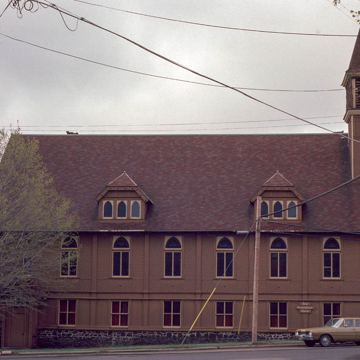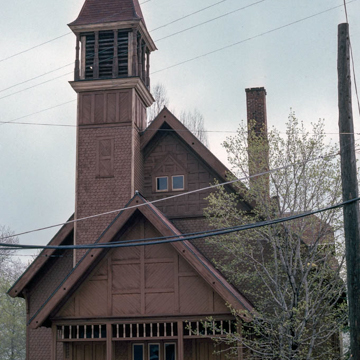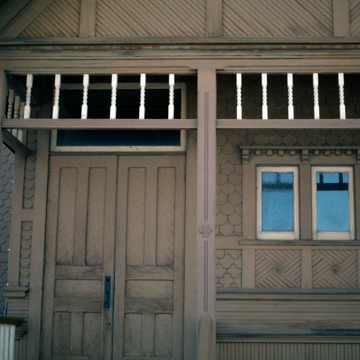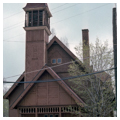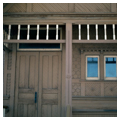This church is a white pine balloon-frame building with Gothic windows and hints of Queen Anne in the decoration. With its asymmetrical tower it stands on a raised mine rock foundation and is sheathed with richly textured shingles and cut-wood patterns in herringbone, squares, pinwheels, and rosettes. From each of two entrances within the front porch, stairs lead up to the auditorium. The pews are arranged in a semicircle around the pulpit and a pipe organ manufactured by Garret House of Buffalo, New York, in 1874, originally installed in the Calumet Congregational Church and later moved to this location. The wainscoting and ceiling are finished in beaded wood panels and furnish a warm background for the windows colored in pastels. A largely Scottish congregation of copper milling officials and local businessmen were responsible for the building of this church. They called on the noted Chicago firm of Holabird and Roche to design it. The church is representative of Upper Peninsula buildings designed by architects working in eastern and midwestern cities, and who were available perhaps due to business connections. Emery and McCurdy constructed the church. Today the Houghton County Historical Museum owns and operates the church as an interpretative center.
You are here
First Congregational Church of Lake Linden
If SAH Archipedia has been useful to you, please consider supporting it.
SAH Archipedia tells the story of the United States through its buildings, landscapes, and cities. This freely available resource empowers the public with authoritative knowledge that deepens their understanding and appreciation of the built environment. But the Society of Architectural Historians, which created SAH Archipedia with University of Virginia Press, needs your support to maintain the high-caliber research, writing, photography, cartography, editing, design, and programming that make SAH Archipedia a trusted online resource available to all who value the history of place, heritage tourism, and learning.


